DIY Burn Cream: A Healing, Soothing Burn Salve for Everyday Burns
This post may contain affiliate links, including those from Amazon.com, which means we earn a small commission off your purchases. And here's the thing: We only mention services and products that we think are truly worth your attention, whether they're free, paid, or otherwise. This site relies on YOUR trust, so if we don't stand behind a product 110%, it's not mentioned. Period.
Whether it's the sunburn you got when you spent the day wandering through the farmers market or the burn your child got under their nose when they leaned in to smell your fresh-baked cookies, minor burns are a part of life.
So, I consider a simple burn cream or salve to be an essential part of a natural first aid kit, and this all-natural burn salve is my current favorite. It soothes the skin, aids healing naturally, and smells lovely.
[Note: Please remember that any serious burn, any large burn, or any burn that is wet to the touch should be treated by a professional. Also, please note we're talking about common household burns and sunburns in this article. If you're dealing with a chemical burn or an electrical burn, call 911 immediately.]
How to Treat a Burn – Naturally
Okay, before we do anything else, let's talk about how to treat a burn.
A burn in essence is the damage done to the skin when exposed to heat (or cold) sufficient to destroy or damage it.
The severity of the burn is determined by how deeply the damage affects the tissue. As heat penetrates, it damages each layer of skin in turn.
What's important to know here is that if the heat still remains, the damage can continue, even once you're no longer in contact with the item that burned you. That's why running a burn under cold water feels so good, because it's actually cooling the affected area. (Don't place ice on the burn, however, as it changes the temperature of the tissues too quickly and can actually incur further damage.)
Thus, treating a minor burn – especially a sunburn – has three steps in order to minimize deeper tissue damage:
- Remove the heat source and run the burn under cold water for at least 30 seconds. For young children, I like to have them sing the alphabet song or another song they love to help them keep the burn under the water and distract them a bit.
- Rinse the burn with white or apple cider vinegar. Either pour or dab pure white or apple cider vinegar over the affected area. (More about that in a minute.)
- Apply a burn cream or other healing salve. This can be rubbed in if the burn is very minor or if the burn is very sensitive, dabbed on thickly, then loosely dressed with gauze, a towel, or a t-shirt.
Now about that vinegar. While there is documented anecdotal evidence dating back as far as ancient Egypt that burns heal more quickly when washed with vinegar, there aren't any studies specifically linked to WHY vinegar speeds healing of minor burns. Yet, there are a veritable landslide of modern studies that show its antiviral, antiseptic, anti-aging, and healing capabilities. Even L'Oreal submitted a patent back in 1995 for the use of vinegar in their anti-aging creams, citing a number of known studies. It is purported that the weak acetic acid in vinegar balances the damaged skin's pH, which accelerates healing and skin regeneration, thereby also reducing scar tissue.
As a side note, there is even a fascinating patent filed stating that the mixture of any citrus juice and salt has been shown to “stop pain on contact, prevent blistering, cause the tissue to remain elastic, promote healing and prevent infection.” This is merely my own conjecture, but I would imagine that since the citrus juice is also a weak acid coupled with various vitamins and minerals that the healing function would be similar.
So, basically, we don't necessarily know why, but there is ample reason to include vinegar in your basic care of burn wounds.
(Now, if someone could just do a study showing that kombucha has the same effect when used as a skin toner….)
Okay, enough talking. Let's get to the good stuff. 🙂
First of all, please note that this is a salve. Salves are typically made of a liquid oil base that is firmed up by the addition of a bit of wax, in this case, beeswax.
You'll notice that I've also referred to this salve as a “cream,” such as in the title at the top of the page, and that's because there is the optional addition of a water-based liquid, in this case either aloe vera or rosewater. A cosmetic cream is a thick emulsion of a water and oil together, with or without other emulsifying agents besides the wax.
And for an extra healing boost, you may infuse the oils with healing herbs before making the recipe. Comfrey and plantain are especially wonderful for this, and I go into detail on how to infuse herbs in oil on this post: How to Infuse Herbs in Oil for Natural Remedies
Know Your Ingredients
Raw Honey – Honey is antibacterial, antiseptic, and anti-inflammatory, but must be in its raw state to be of use in wound healing. For burns, honey is especially useful because it stimulates new tissue growth, soothes the skin, and prevents primary infection. Raw Manuka honey is notably more effective, so much so that the FDA has actually approved one Manuka honey wound dressing for use in the US. (In fact, if you'd prefer not to make your own burn salve, you can find the 100% Manuka honey Medihoney Would Dressing at your local pharmacy or on Amazon. Click here to see more.)
Coconut Oil – Coconut oil accelerates skin regeneration and stimulates collagen production within the tissue being repaired. It also just feels deeply soothing!
Beeswax – Beeswax is used in this application largely as a firming agent, but it also locks in moisture (thus acting as a moisturizer) and protects the skin while it heals. Beeswax also holds many of the same antibacterial and anti-inflammatory properties as honey, so it is beneficial for burn healing in its own right.
Sea Buckthorn Oil – Sea Buckthorn oil contains more Vitamin E than any other oil and contains a high percentage of essential fatty acids, which makes it highly valuable as a cosmetic and rejuvenating component in healing and anti-aging creams. It is highly emollient and is very easily assimilated and absorbed by the skin.
Both aloe vera and rosewater provide a deeply soothing feel when rubbed on a minor burn (sunburn in particular) and aid in pain management.
So, whether you make a cream or a salve, may this burn ointment serve you and all those in your home well. 🙂
And please tell us below – what is your favorite way to treat minor burns and sunburns?
Burn Salve: A Soothing, Healing Balm for Sunburns & Everyday Burns
Ingredients
- ¼ cup raw honey, preferably Manuka honey (see where to buy Manuka honey)
- ¼ cup unrefined coconut oil, see where to buy coconut oil
- 1 teaspoon beeswax, see where to buy beeswax
- 1 tablespoon Sea Buckthorn oil, optional (see where to buy Sea Buckthorn oil)
- ½ teaspoon aloe vera gel, aloe vera juice, or rosewater (see how to make your own rosewater)
Instructions
- In a small, heavy-bottomed saucepan or double boiler, heat the beeswax over the lowest heat possible.
- When the beeswax is nearly melted, add in the coconut oil and melt completely.
- Stir in the honey and Sea Buckthorn oil, if using, and whisk over the heat only until the whole mixture is one uniform liquid, about 30 seconds.
- Remove from the heat and either pour directly into tins or other containers OR stir in the aloe or rosewater briskly until the mixture is completely homogenous, then pour into your containers.
- Let sit until comfortable to touch before using. The mixture will fully harden in approximately 6-12 hours.
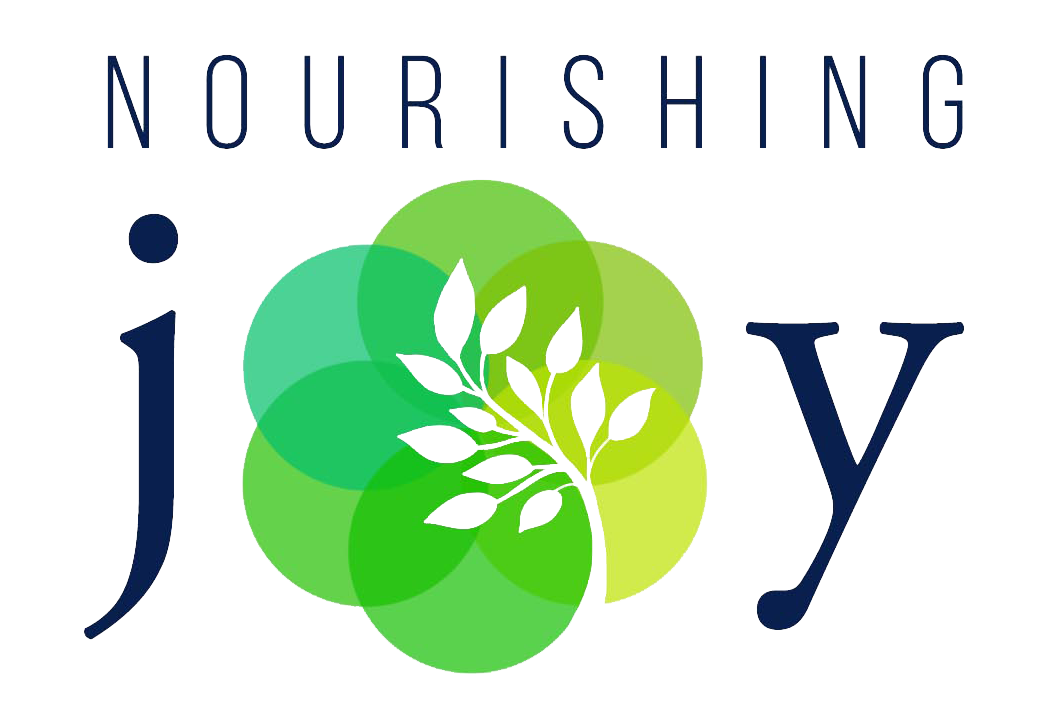
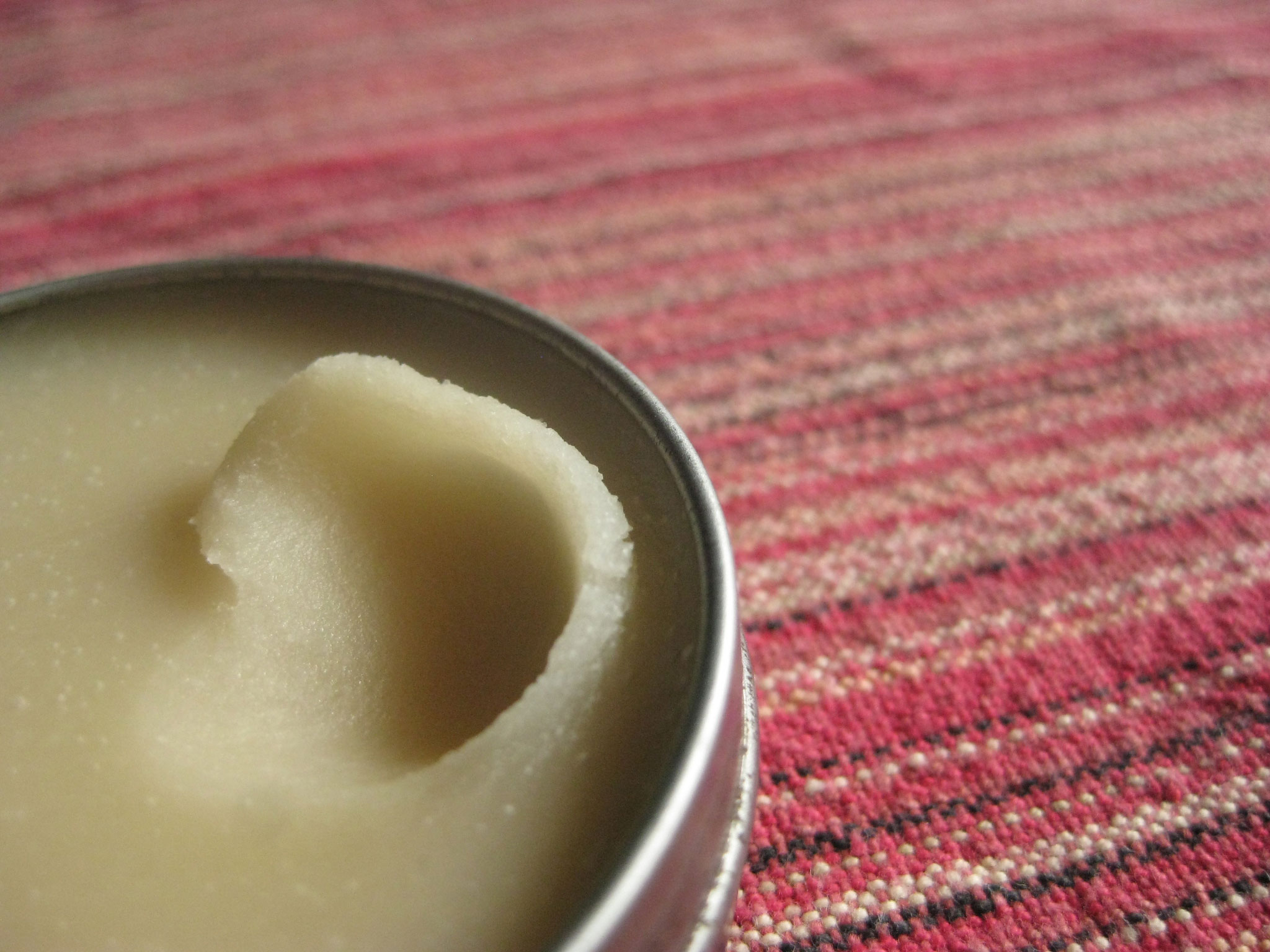

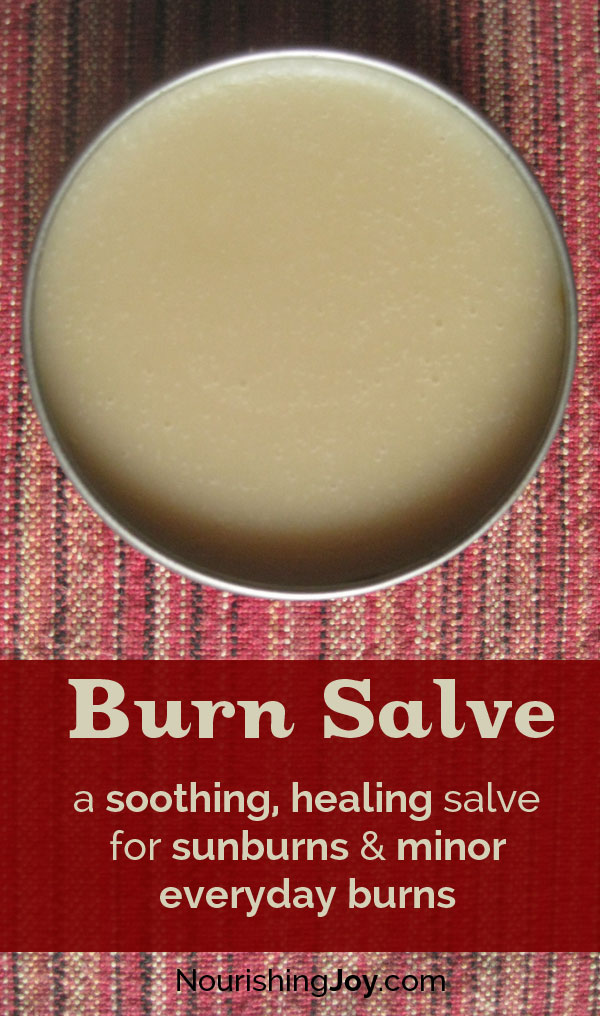
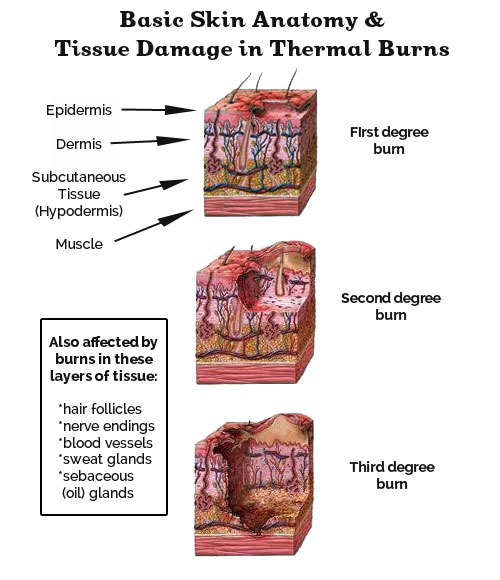
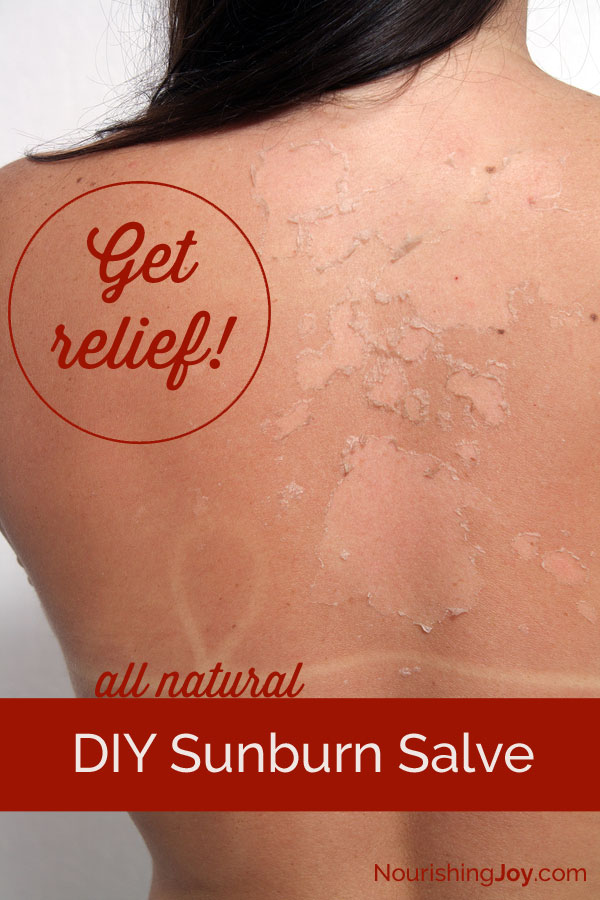
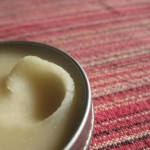


I heal burns with vit E and Aloe. Vit E takes away the pain almost immediately. Natural of course.. Aloe is the best after that or with it. Getting to know Plaintain though and all it can do.
im curious, how you manage to keep the honey and aloe/rosewater from migrating out of the suspension….beeswax to my knowledge is not a good emulsifier….you know the old adage “oil and water dont mix”…they dont….so i wonder how this stuff actually manages to stay together?
how old is your oldest version of this and has separation occurred?
You’re exactly right – beeswax is a horrible emulsifier. 🙂 I just wanted to use the most natural, beneficial wax possible for wound care. But yes, I find that the aloe or rosewater seeps out to form beads of moisture on the top after about 2-3 weeks if I mix the salve by hand and about 4-5 weeks if I mix it with a blender (which is only possible in larger batches). But since those ingredients are just there to soothe, I don’t find that it affects the function of the salve at all, so I don’t really worry about it. (Granted, I’m not selling them or giving them as gifts. If I was to do either of those things, I’d likely leave those ingredients out.)
You could also use emulsifying wax, which holds everything together superbly, although it’s highly processed so it’s not a “natural” additive. 🙂
Does that clarify things?
so everyone knows
Bees wax is not a emulsifying wax but there are plant basted organic e-wax’s on the market, also if using anything other than pure oils and natural butters there must be a preservative or you will get bacteria even after just a few days.
Well, you’re definitely correct about the beeswax, but even if you use “pure” oils and natural butters, you’re still going to have bacterial growth if no preservative is used. The bacteria don’t come with the lesser quality ingredients – they’re introduced from the ambient environment and by sticking your finger in the mix as you use it. This is why I’ve provided the “use by” times that I have.
I usually use virgin coconut oil…it’s awesome!
I am pinning this and making to have on hand ‘just in case’….ya never know eh?
Thanks!
I don’t have sea buckthorn, what could I use in place of it? Olive oil?
If you don’t have sea buckthorn, just feel free to skip it. 🙂
can you use aloe vera oil in this
Yes, absolutely, but since it’s a water-based substance, the shelf life will only be a few days or weeks. But it would be wonderful for helping feel relief, for sure!
I found the honey completely took over, it is quite sticky. Is yours always like this?
Hmmm… no. When I make it, you can tell there’s honey in it, but it’s more like a balm or a salve, not like honey in its texture. More just slightly tacky but not at all sticky.
Here’s what mine tends to look like:


And also how long does this usually last without a preservative?
Since this has water-based ingredients, I recommend using it within a few days – a couple weeks at most. If you’d like one around longer than that, leave out the aloe/rosewater and apply it separately.
So I recently put a texturizer in my hair, which is just a mild perm, and I believe that I have chemical burn in a few spots on my scalp. I don’t think that the burns are a major problem but now my hair is starting to stick to my scalp. Can I use this for my scalp? If so, would I have to apply it directly to the affected areas or can I use it on my entire head? Also, would I have to rinse it out after a certain amount of time?
Well, that’s a great question. Typically I would say that chemical burns should never be treated with a salve or ointment, as they can lock in the chemical and worsen the damage. However, in the case of scalp burns due to hair products, assuming you’ve already washed with a neutralizing shampoo or flushed the hair and scalp with water profusely and your scalp is no longer tingling, then yes, this salve may be a good treatment for your scalp. The sea buckthorn and honey in particular should help both with softening the scalp to allow the hair to release and to heal the skin. However, I will say that I am VASTLY inexperienced with hair products, so I would also HIGHLY recommend talking with a knowledgeable hairdresser or dermatologist.
As for the best way to use it, as long as the burned area is dry, is not weeping whatsoever, and there are no open wounds in the burn, yes, apply it directly to the affected area. And yes, you may use it on the whole head and yes, you should wash it out at some point, as the skin will not absorb it since it’s designed to create a coating on the top of the skin and thus will likely create an unseemly mess if left in indefinitely.
So, I hope all that helps! I certainly wish you a quick and painless healing.